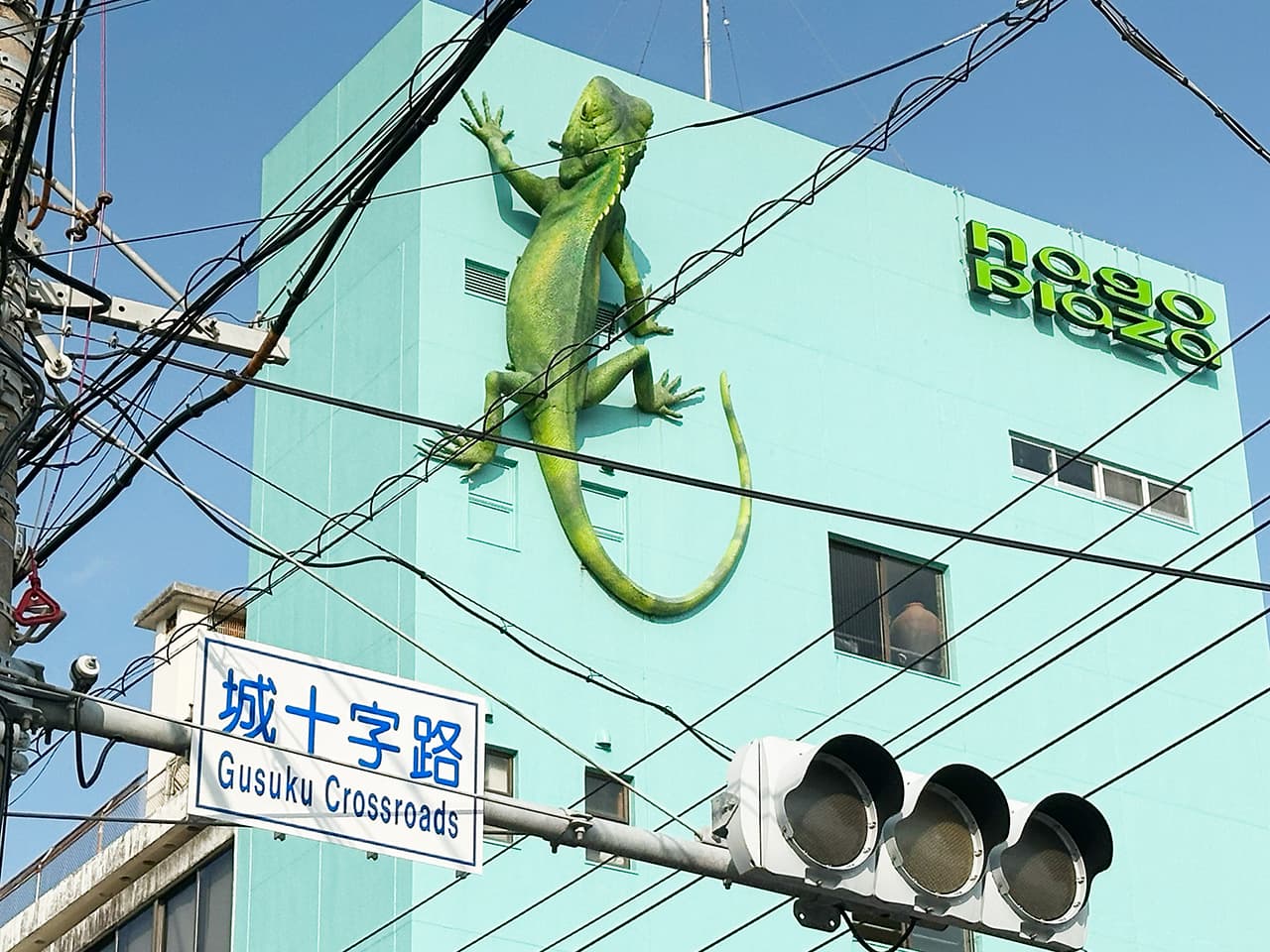A walk over the Rainbow Bridge
People in Tokyo are very familiar with the landmark Rainbow Bridge but not so many seem to know that you can walk across it. Let’s go!
He probably doesn’t want to annoy his neighbors, I thought, when I saw a man practicing his saxophone underneath an overpass that connects to the Rainbow Bridge on the Shibaura side.
It was around noon and I had just arrived at the bridge but I was a bit too early. The sun was directly overhead — perfect for messing up your photos. I decided to wait for a bit.
Passing the future Kenny G, I walked in the opposite direction to see the bridge from more far away. I had a great view of the loop section where the Yurikamome monorail ran across in a spiral every few minutes. The Rainbow Bridge was just behind the loop. I’ve always seen this bridge either from the Odaiba side (think the iconic view with the Tokyo skyline) or by passing over it in the monorail. But this time it looked a lot different. It’s a massive, imposing structure, bigger than I would have imagined had I not seen it from such a close distance.
Once the sun moved into a better position, I went back to the bridge toward the entrance at the Shibaura Anchorage. Standing directly underneath made me feel like an ant looking up at a giant.
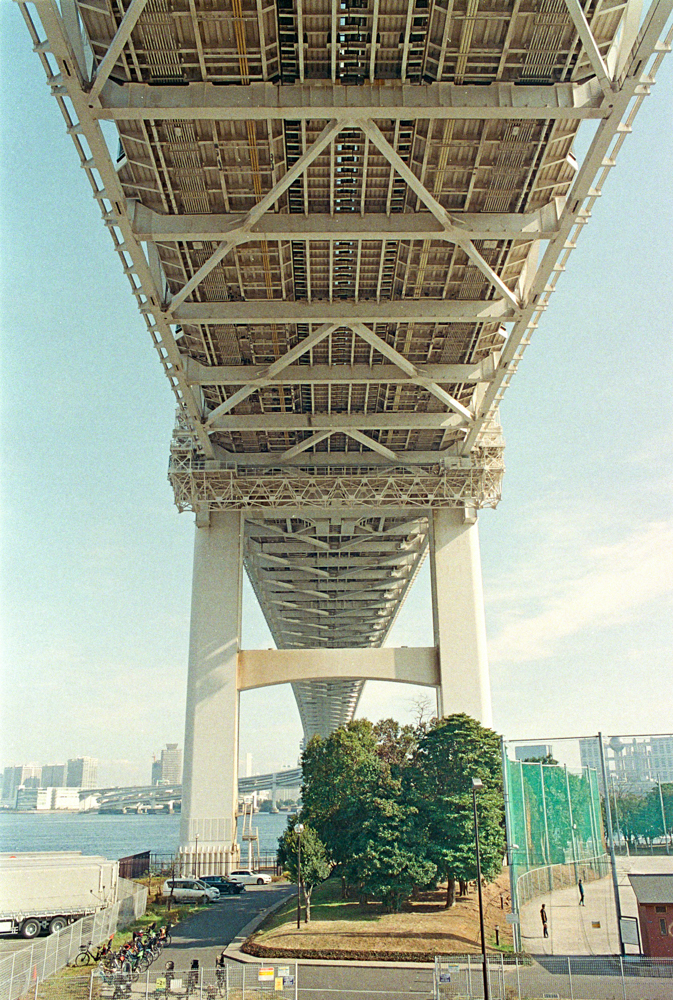
The lobby at the entrance seemed like it was once a more lively place that welcomed tourists, but now it looked somewhat empty and abandoned. There is a reason for this — when the bridge was still relatively new, it used to be a more popular sightseeing spot and they charged a small admission fee of 300 Yen. Over time, more people moved into the area and they opened it as an ordinary bridge. It’s now free of charge.
I took the elevator up to the “Rainbow Promenade” (the pedestrian walkway). Very noisy place with not-so-fresh air! Regardless, the bridge itself was very clean.
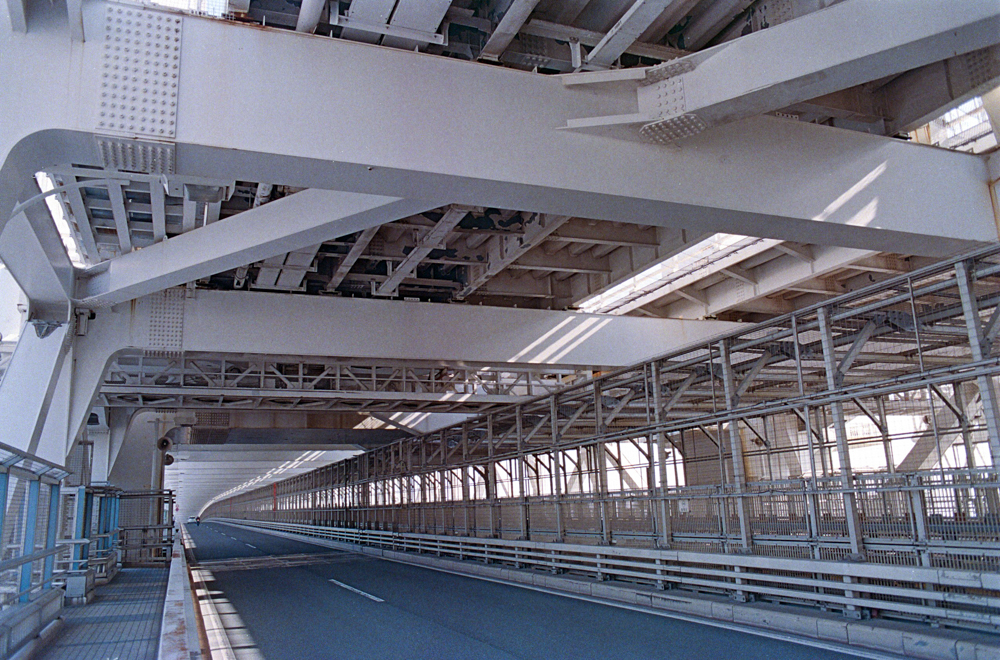
The “Rainbow Bridge” is a nickname — the official name is less exciting: Shuto Expressway No. 11 Daiba Route – Port of Tokyo Connector Bridge. When it opened in 1993, it was the world’s first bridge with three different illumination colors. The 444 solar-powered lights, placed on the wires supporting the bridge, change colors depending on the time, season and events.
The structure is double-decked. The upper floor is reserved for the Metropolitan Expressway; the lower floor is for the driverless Yurikamome monorail in the middle, with a regular road and the promenade on both sides. Average traffic volume is around 58,000 vehicles per day, according to data from 2015.
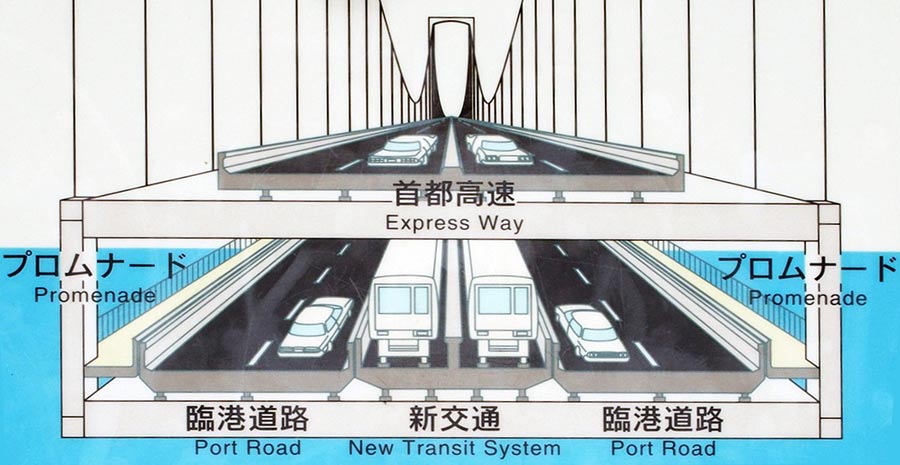
Along the 1.5km walkway, there are a few observation decks and information boards describing locations that are nearby, which is a nice touch — without this it would become just another plain bridge.
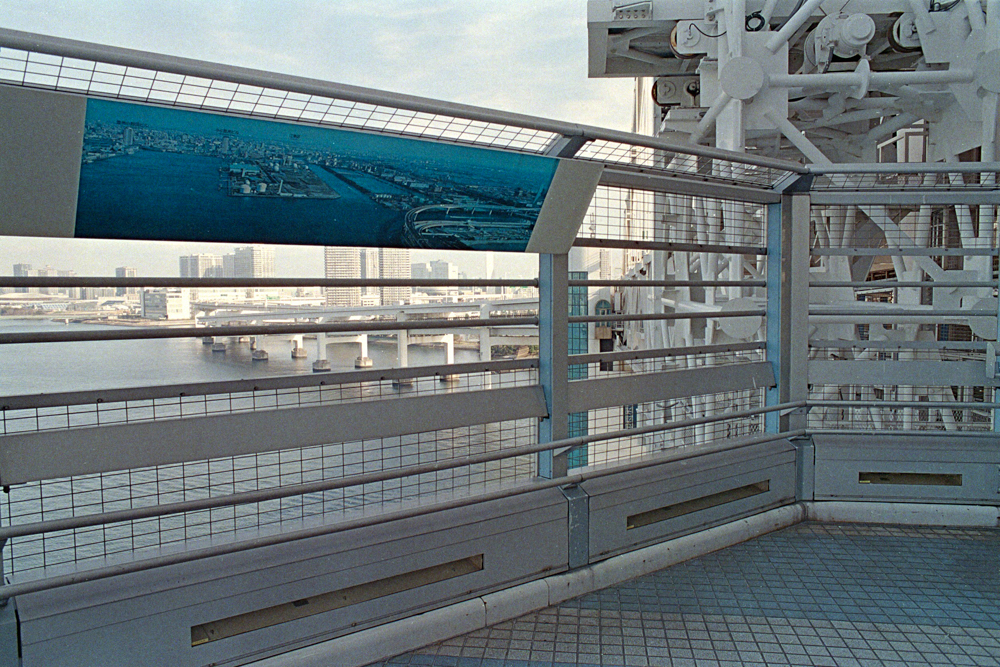
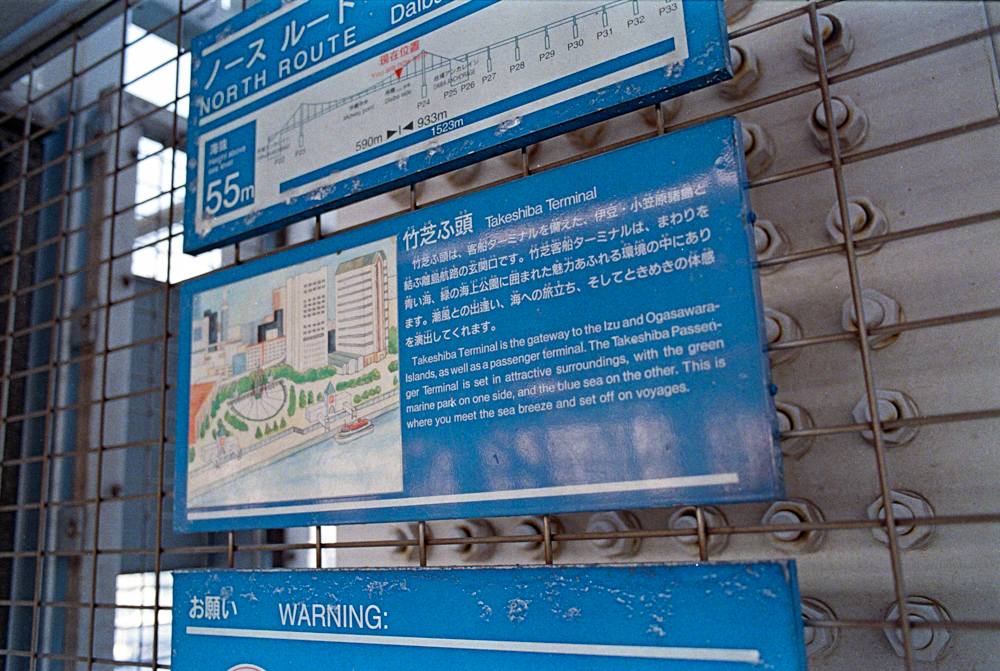
I took the North Route to walk to the Odaiba side. Via this route, I could see the wide panorama of central Tokyo. It takes about 25 minutes to walk across. I met a few people passing by, most of them just strolling and taking pictures (like me), jogging, or pushing a bike. It’s forbidden to actually ride a bike over this bridge; you have to push it. For this purpose, there are staffed offices on both ends of the bridge where you get a small trolley that attaches to the rear wheel.
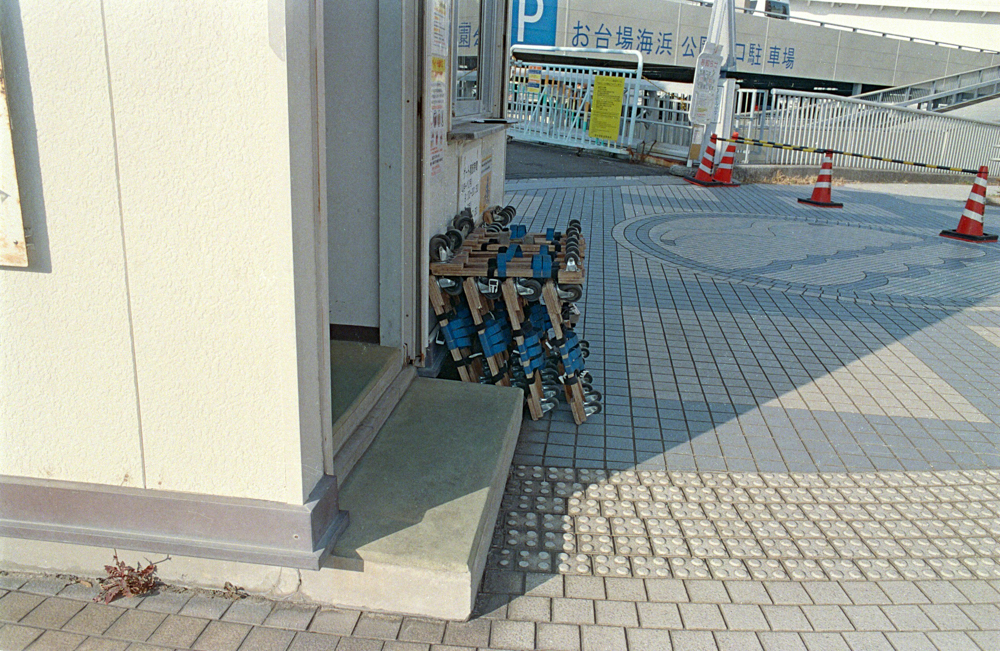
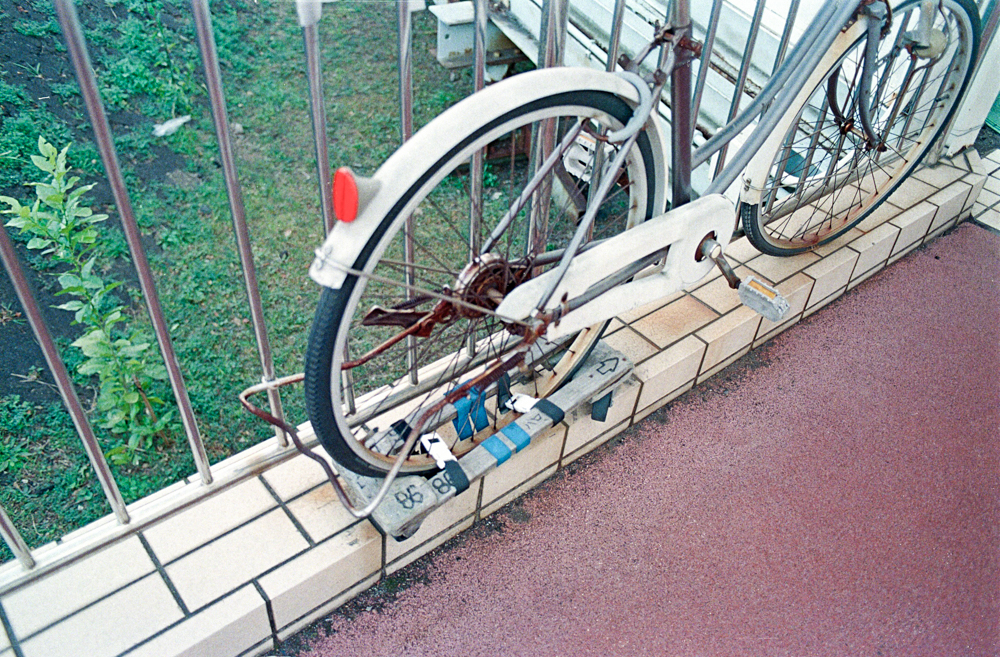
The Rainbow Bridge was built to withstand wind gusts of 240 km/h and earthquakes of large magnitude such as the Great Kanto Earthquake. It was designed assuming a height of 52 meters to allow cruise ships like Queen Elizabeth 2 to pass under it (Queen Elizabeth 2 was a symbol of luxury ships at that time but it never actually passed here). Today, most passenger ships are much bigger and wouldn’t be able to go underneath. Aviation restrictions due to the nearby Haneda Airport also prevented the bridge to be built any taller.
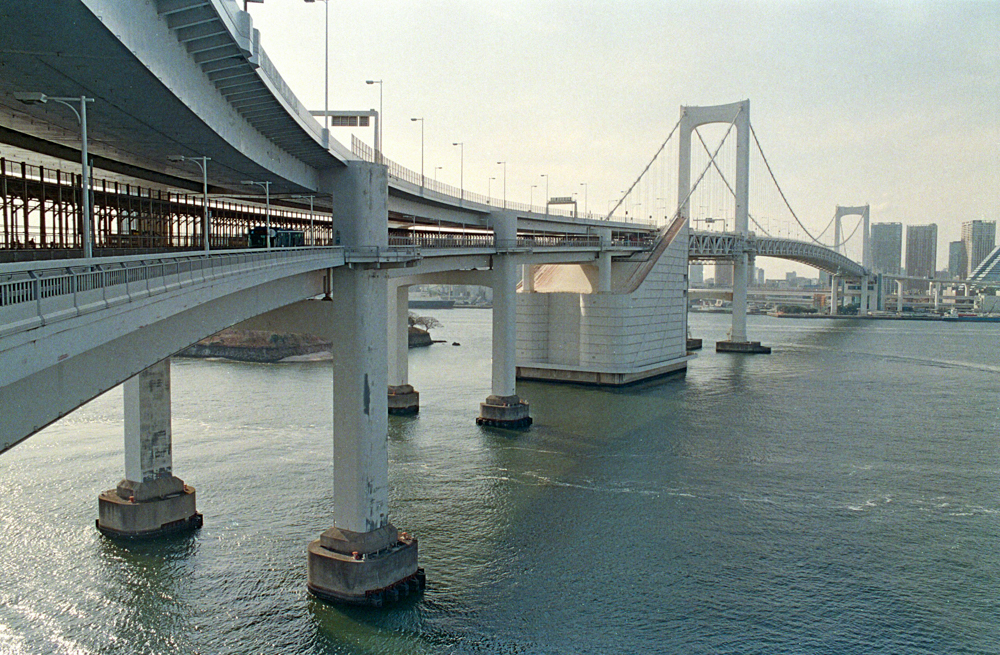
I talked about the visible part. But what’s under the water?
Apparently, the bridge was built on mudstone, a soft sedimentary rock. This isn’t very common; very few suspension bridges are built on this type of soil. To build the foundation for the supporting pillars, they used the so-called pneumatic caisson method (see what that is here). At the time of construction, the bridge had one of the largest caisson structures in the world with the foundation that extends 46 meters below sea level.
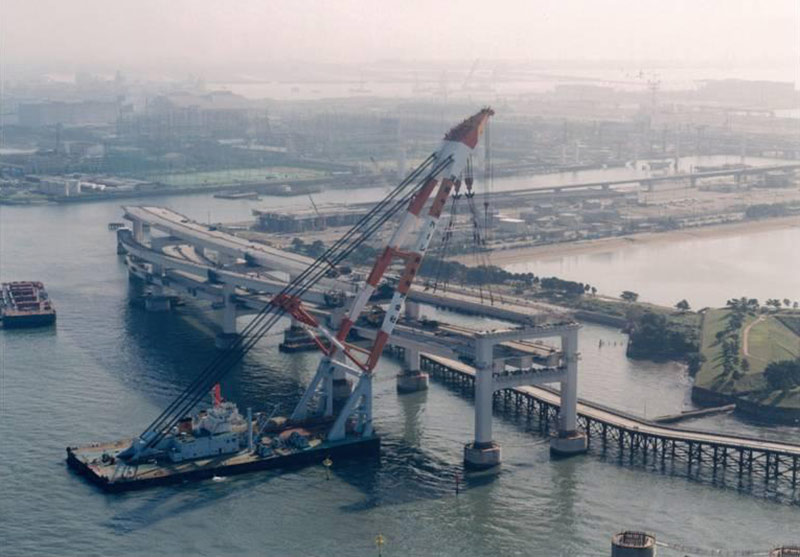
This part of Tokyo Bay is shallow, with water being on average 17 meters deep. Because of the terrain under the bay, the water from the bay doesn’t mix well with the water from the open ocean. This means that once the water inside the bay becomes polluted, it takes a long time to clean — an important factor to consider for environmental conservation of Tokyo Bay.
Nearing the end of the promenade, still on the bridge, I went down a stairway, crossed a pedestrian underpass and got to the opposite side. But before I went back via the South Route (the route with the Odaiba view), I took a short detour to the nearby Daiba Park, which is like a small square shaped island very close to the bridge, surrounded with water.
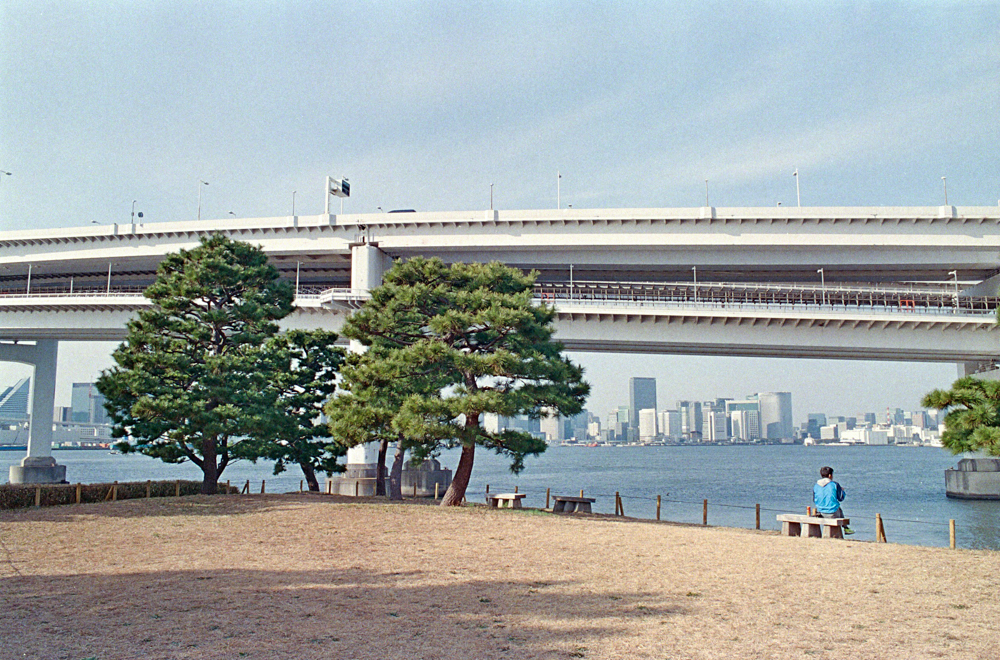
Fantastic place to take shots of the bridge! Even more so during illumination. I was surprised with how natural this park felt, especially in contrast with the futuristic Odaiba district just behind it. Almost forgot I was in a big city.
It was time to go back to the Shibaura side. Somewhere along the way, I was suddenly reminded of Tokyo Olympics 2020. How? In the far distance, I could see the large Olympic rings floating on the water on a platform just off the coast of Odaiba Marine Park. They’ve been on display there since the beginning of 2020. No matter what happened in that year, they continued standing there, like a lone fearless fighter. Even with weak public support, it’s pretty clear by now that Olympics will happen in some form this year; let’s hope that everything goes as safely and as smoothly as possible.
As I exited the Shibaura Anchorage, I wondered if Kenny G was still there practicing under the overpass. But he was gone. Maybe I will see him someday in another unexpected place.
